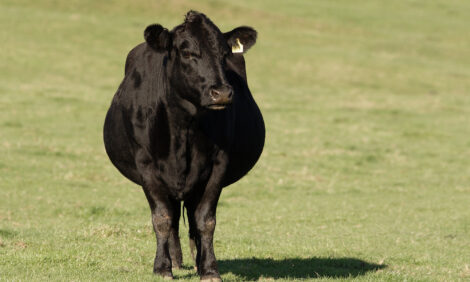



XLVets Best Practice Articles: Liver Fluke In Cattle
Over the past years we have seen an alarming increased incidence of liver fluke. This has coincided with a greater geographic distribution beyond the traditional at risk, high rainfall areas, says Rod Welford, from XL Vets.The main signs are of a reduced growth rate, a gradual depression of milk yield and stock that the farmer comments are generally not thriving.
Farmers often overlook fluke in cattle because the signs are very subtle and clinical disease is rare. Just because you don’t see the signs or the farm has never traditionally had fluke doesn’t mean that the cows and young stock wouldn’t benefit from a fluke control strategy.
Low grade infection of just 100 fluke, was found to result in 400litres/cow/lactation lost yield.
For 100 cow herd at 18 pence per litre this equates to £7,200 per annum.
Fluke also has a detrimental effect on butterfat. Research shows untreated animals can experience 10 per cent less milk solids.
The heavily pregnant dry cow in poor body condition can indicate a fluke associated nutritional challenge in late pregnancy. Calf birth rates on fluke infected cows can be 10 per cent lower. Young-stock experiences poorer growth rates giving reduced efficiency for the rearing of replacement heifer.
Fluke infection can reduce feed conversion and depress appetite (Dry Matter Intake reduced as much as 11 per cent). This nutritional stress depresses fertility and compromises the cow’s immune status. In essence fluke infection will reduce lifetime performance.
Fluke infection can precipitate other infectious disease such as the Clostridial infection: Black disease or compound outbreaks of Salmonella.
Many farmers see the need to treat for fluke infection in sheep where symptoms can be more graphic, yet fail to recognise the production loss in cattle.
‘Liver Fluke’ (Fasciola hepatica) is a flat leaf-like (3.5cm) parasite found in the liver of grazing animals. Eggs from adult female fluke pass in the dung to contaminate pasture. When conditions are suitable, damp and warm (above 10 per cent), the eggs evolve and hatch to form mobile larvae that seek out mud snails to complete their life cycle. The presence of the amphibious mud snails determines the distribution of fluke.
The highest risk occurs when grazing wet areas, and rutted pools of water. Anywhere there are pools of water.
The larvae multiply in the snails and emerge to attach to the grass as cysts. The grazing animal ingests the cyst where it breaks out as an immature fluke to make its way to the liver. The fluke tunnel through the liver which if conditions favor the mass hatch and infection can cause severe and permanent damage.
The adult fluke live in the bile ducts of the liver where they feed on blood. This can amount to half ml per adult fluke per day explaining the anemia exhibited by infected animals.
Fluke diagnosis is not straight forward and needs careful interpretation so speak to your vet. Fluke egg counts from faecal samples indicate infection but egg production is sporadic. Blood sampling a random group (often young homebred stock are a good indicator) can reveal the foot-print of fluke infection. Post mortem / slaughterhouse feedback provides a direct report of fluke level in condemned livers. Many more abattoirs are doing this now.
Treatment is very effective but needs to be targeted to the fluke season and recognize the variable efficacy of product for the different stages of fluke (early immature, immature and adult). You must bear in mind the milk withhold which means often treatment is targeted in the dry period.
Treatments come as drenches and injections. And you can get combined wormer and fluke.
Recognising fluke and a strategic approach to treatment should be a component of your herd health plan reviews. A little investment in health will go a long way to alleviating the production loss that is the hidden cost of fluke infection.


